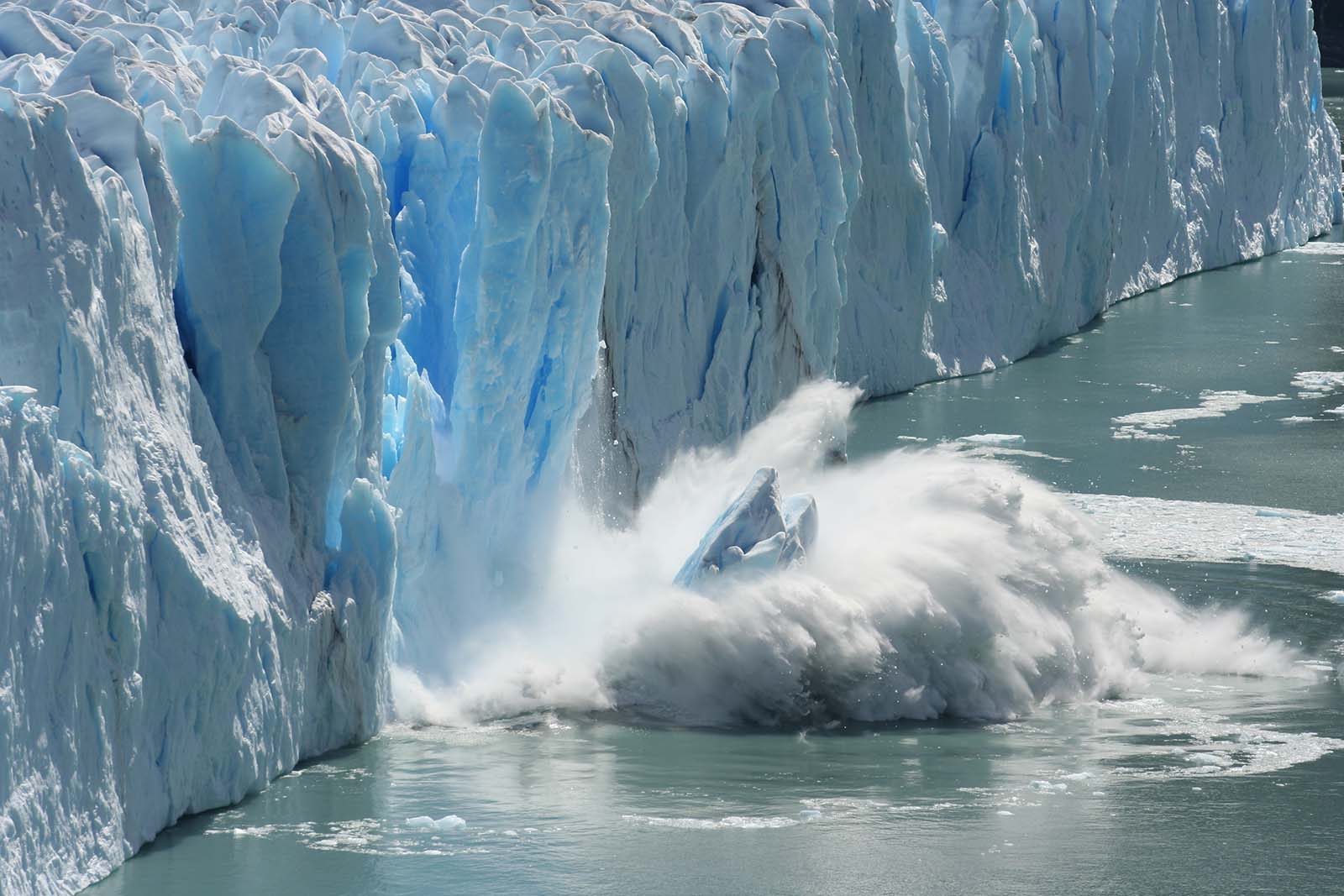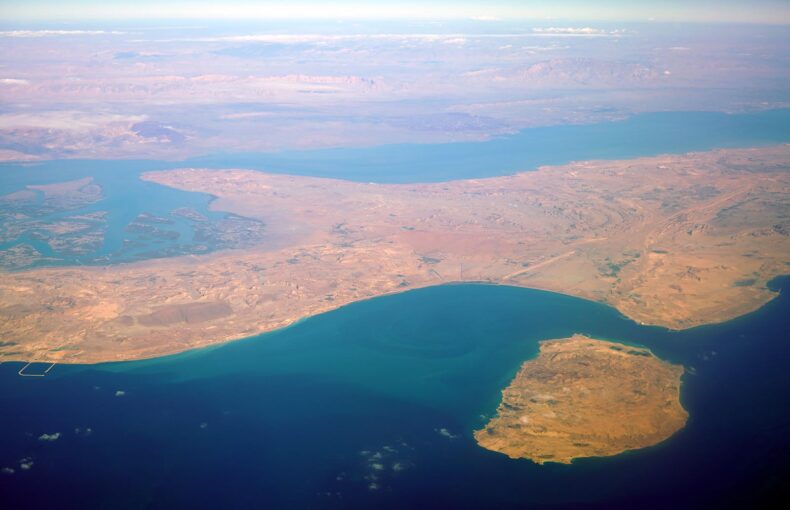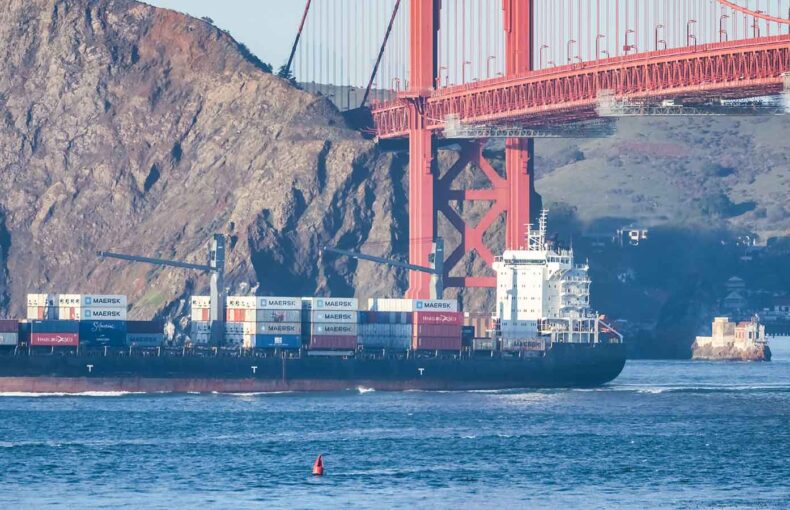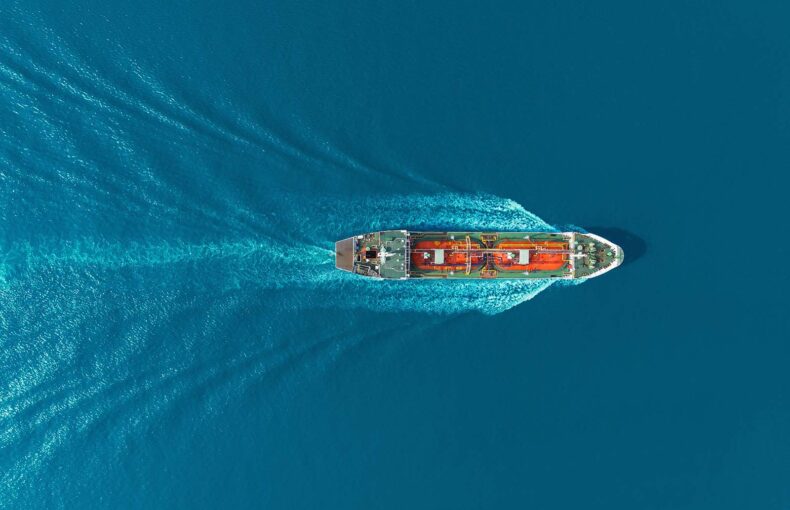Arctic shipping: The once unattainable becomes increasingly normalized
The ability to sail the world’s northernmost seas has long been a nautical dream pursued by explorers and heavily invested in by nation-states.
A Northwest Passage that could connect the Far East and Europe by sailing north was a goal that England, then Great Britain, periodically invested in for centuries. Likewise, Tsarist Russia regularly explored possible arctic sea routes.
But as the Norwegian explorer Roald Amundsen put it, after slowly finding a way to traverse the Northwest Passage between 1903 and 1906, the route was “the most formidable obstacle ever encountered by the inquisitive human spirit.”
But that was over a century ago in a very different world with a significantly different climate. On August 29, 2007, the Moderate Resolution Imaging Spectroradiometer (MODIS) of NASA’s Aqua satellite captured the fact that enough sea ice had melted to make a nautical journey above the North American continent possible. Similar changes have been occurring north of Europe and Asia. Today, the expectation is that arctic sea-lanes might be regularly free of summer ice by 2035.
And though much has changed, the desire to use the arctic for shipping—and the competition between nation-states and corporations to do so—is still very much in play.
Arctic shipping is already picking up
Since the visual evidence was captured from Earth’s orbit in 2007, shipping companies and national governments have been pushing the envelope in Arctic waters. Russia has successfully sailed tankers without the aid of icebreakers, Maersk transited a container ship via the Northern Sea Route (NSR), and in 2018 China began developing a project dubbed the “Polar Silk Road.”
The sea ice extent has steadily become shorter in duration and less dense in actuality over the past decade. In response, shipping traffic patterns are beginning to be altered.
This Spire Maritime two-minute time-lapse video of the Russian liquefied natural gas (LNG) carrier Christophe de Margerie working Arctic waters from May 2020 to March 2022 shows the transition from tentative exploration to developing routine shipment runs. The ship’s voyages are part of developing the long-term potential of expanding both the duration of Arctic shipping (meaning winter journeys) and its footprint across the entirety of the Northern Sea Route. One important aspect of this is that the LNG carrier did not require the help of icebreakers while navigating the NSR, which now appears on the cusp of reality.
This highlights just how access to the Arctic Ocean is now in a state of flux. The practical result for the shipping industry is longer navigable seasons and access to previously difficult-to-reach areas.
Northern traffic will continue to increase

What’s driving this is no secret. Climate change has reached a point where substantial changes in weather patterns are now “baked in” and countermeasures are necessary. In one of life’s double-edged swords, the environmental alterations being driven by global warming are, in this case, also opening an opportunity for emission reductions in the coming years.
As maritime interests centuries ago realized, being able to sail the only ocean that borders all three of Earth’s northern continents would be a time and resource saver. Given that today the vast majority of the world’s goods are moved using water-based modes of transport, the impact of Arctic routes is sizeable.
“The Arctic sea ice retreat is opening up both the Northwest Passage (across Canadian Arctic waters) and the Northeast Passage (also known as the Northern Sea Route, NSR, passing along the Siberian north coast), during parts of the year. Both routes have potentially significant effects on global trade; NSR, for example, provides a distance reduction of up to 40% compared to the current Suez Canal route (referred to as the Southern Sear Route, SSR) for trade between Northern Europe and Eastern Asia,” explains a 2017 article published in the journal Climatic Change. “[It is estimated] that 4.7% of the world’s future trade (equivalent to around two-thirds of the expected traffic otherwise going through the Suez Canal) could be re-routed through NSR in 2030 under the “middle of the road” SSP2 socio-economic scenario, provided the route is navigable all year round.”
According to the World Wildlife Fund, sailing from Rotterdam to Tokyo via the Suez Canal is a 21,000-kilometer trip that would be cut to 13,000 kilometers via the Northeast Passage. New York to Tokyo, via the Panama Canal, is now 18,500 and would be 14,000 using the Northwest Passage.
This reality is an economic opportunity that is fully understood and already being pursued not just by competitive businesses but nation-states as well—including adversaries the United States, China, and Russia.
The complex impacts of change
These new route opportunities will be incorporated into an industry that has already been developing more efficient and sustainable business models. There are a number of positive aspects to Arctic shipping routes … and several risks.
The positives of Arctic shipping
By shortening distances between already established ports, new northern sea routes would reduce shipping times by weeks between some of the world’s currently busiest ports. This would provide a host of cost savings, including a reduction in fuel consumption, wear-and-tear on ships, and crew needed. Bottlenecks at the busiest ports can also be lessened by more easily staggering arrivals and departures.
It would also provide the opportunity for certain ports to grow to best utilize these new routes. As Mia Bennett explored in-depth for The Maritime Executive, a wide range of possibilities are about to become accessible and the pace of this change is accelerating: “Ports situated at the Arctic Ocean’s Atlantic and Pacific gateways, like Dutch Harbor, Alaska, which already sees thousands of ships a year pass between North America and Asia, could become hubs for the Transpolar Passage. Cargo could be fast-tracked between Europe and Asia and North America via polar-class shuttles sailing across the Arctic Ocean. These ships also wouldn’t have size restrictions, as the Central Arctic Ocean’s bathymetry isn’t as limiting as the Northern Sea Route or Northwest Passage. Once out of the Arctic Ocean, cargo could be transshipped from places like Dutch Harbor to ports along the North Pacific, or, on the other side, from a place like Iceland to ports along the North Atlantic.”
The other edge of the sword
There are prices, in addition to the widespread climate impacts that will concurrently be happening around the world, to pay for new access to the Arctic Ocean. Climate change is having a negative impact on wildlife habitats throughout the region and the Native Peoples who live there. A steep increase in ships sailing these waters may not help.
“These gateway areas, however—especially around the Bering Sea, where subsistence hunting and fishing is still a vibrant and critical practice—are also where the negative impacts of increased shipping may be felt. Along the Bering Strait, where the Northern Sea Route, Northwest Passage, and Transpolar Passage all meet, people living in communities such as Nome, Teller, or Dutch Harbor, Alaska could all potentially see more ships passing by, and maybe docking, by mid-century,” points out The Maritime Executive piece. “For them, though, this activity may not herald the start of a great new gilded age of connectivity and globalization. The appearance of open water will drastically undermine food security and permanently alter a way of life that has relied on ice and the beluga whales, walruses, and seals that flock to it for generations.”
Large ships will also bring increased pollution to areas that, if not pristine, are far less contaminated than areas where humans have been long established. The impact of heavy fuel oils (HFOs), which if spilled can persist in cold waters for extended periods—especially after sliding under ice—is a recognized hazard that needs to be mitigated. Emissions from ships will also accumulate in an environment already facing severe challenges from fluctuating and changing weather patterns.
Another concern is that, although the potential savings of sailing the Arctic Ocean are significant, the routes will also likely be highly unpredictable. The Arctic won’t suddenly be devoid of ice, so ongoing challenges will include timetables that will vary due to fluctuations in the speed ships can maintain, the need for icebreakers, and higher insurance costs.
The prominent, and troubled, role of Russia
Another wildcard is the role of Russia. Long before he ordered the invasion of Ukraine, President Vladimir Putin had made clear that developing his nation’s vast Arctic holdings—including its over 24,000 kilometers of coastline—was in his plans. Putin has officially decreed that 80 million tons of goods be shipped via the Northern Sea Route by 2024.
The Ukraine invasion has thrown the country’s international relations into turmoil, including its prominent role in organizations that with Arctic matters.
On March 3, the other seven members of the Arctic Council—Denmark, Finland, Iceland, Norway, Sweden, Canada, and the United States—announced that they’d be boycotting all upcoming meetings in response to Russian actions in Ukraine. There is grave concern that a breakdown in the cooperative development procedures in the Arctic, including the use of its shipping lanes, will hinder environmental research and lead to disastrous results in the northern expanse. A major study of the permafrost that was about to begin has been halted.
International organizations to protect the Arctic
The Arctic Council is one of several organizations attempting to oversee the pending industrial development of the region. A specific step has been the establishment of the Senior Arctic Officials’ Marine Mechanism (SMM), an effort to coordinate the development of Arctic marine issues.
As is explained on the Arctic Counsel’s webpage: “Relative to other parts of the globe, Arctic shipping is still in an early stage, providing an opportunity for the Council in partnership with marine stakeholders to guide its development in a sustainable way. Continuing to monitor Arctic shipping trends and its impacts on the Arctic marine environment and communities, combined with continued cooperation among the Arctic States, Indigenous Permanent Participants and shipping stakeholders will shape the future of Arctic shipping.”
One of the primary Indigenous Permanent Participants is the Inuit Circumpolar Council was founded in 1977 and now represents the approximately 180,000 Arctic native peoples of Alaska, Canada, Greenland, and Chukotka (Russia). It was the first Indigenous Peoples Organization to hold official observer status at a meeting of the UN’s Intergovernmental Panel on Climate Change (IPCC) and is very active in the field.
Also a close partner of the Arctic Council is the International Maritime Organization (IMO), a partnership that included the formation of the Arctic Shipping Best Practice Information Forum in 2017. Meeting annually, it focuses on improving ship safety and lessening the environmental impact of marine operations.
A major outcome of these alliances was the establishment of the International Code for Ships Operating in Polar Waters (Polar Code), which came into effect on January 1, 2017. It sets a series of ship safety and environmental protection protocols that span the design and operation of ships assigned to Arctic waters. One requirement is that all vessels have an automatic identification system (AIS) installed for tracking purposes, which will allow for both the studying of the ongoing effects of increased shipping traffic and mitigating some of the risks of sailing so far north.
Moving forward carefully
Hopefully, the expansion of shipping in the Arctic will be rolled out meticulously. But that will be a challenge given the rupture of relations with Russia (the nation with the longest shoreline in the circumpolar north) and the rest of the Arctic’s communities.
What is not in question is the need for accurate and thorough data regarding the movement of ships throughout the region and meticulous decision-making based on that information. Tracking routing and ship emissions will be an important aspect of the “opening up” of the Arctic’s waterways.
 Written by
Written by


